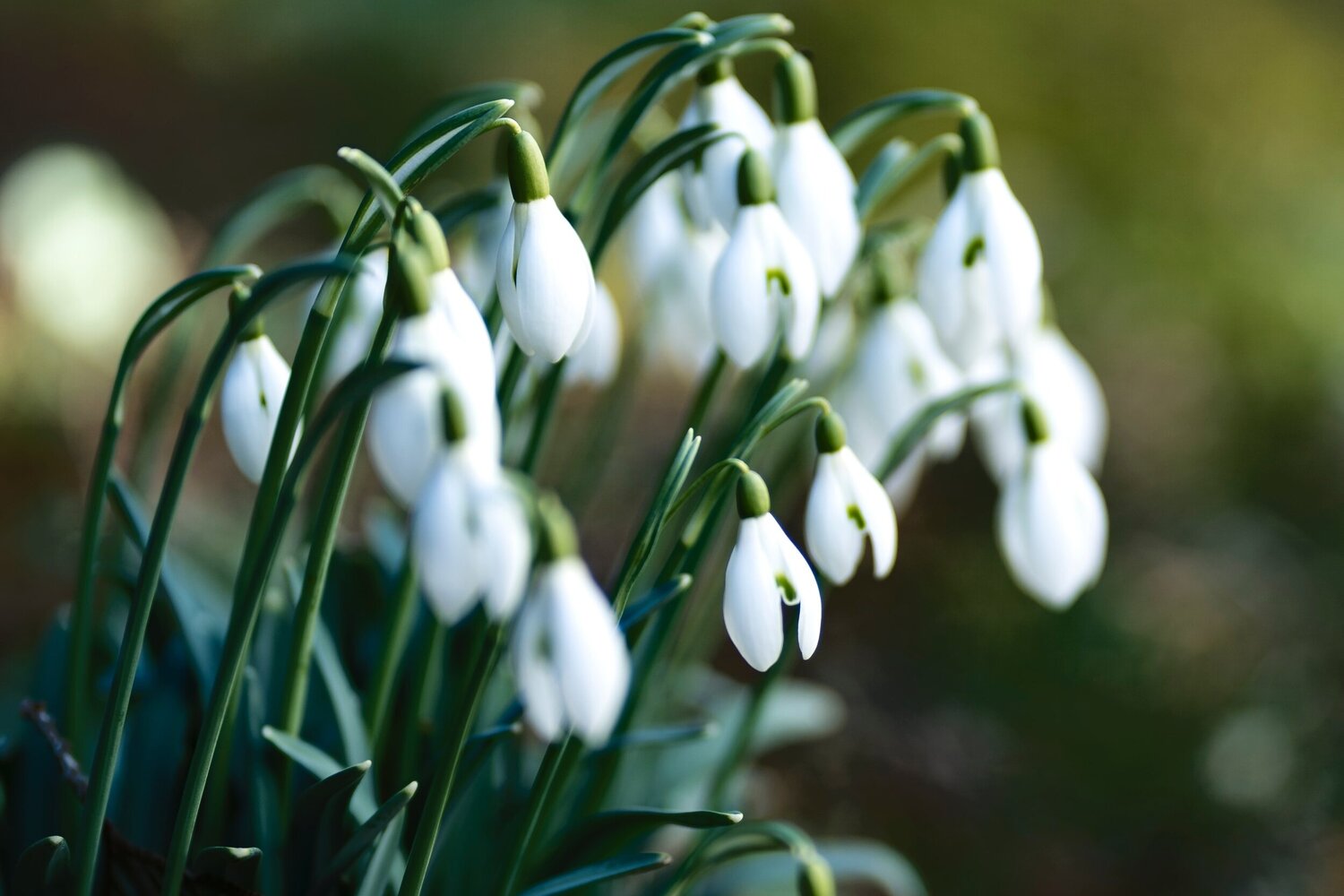
Snowdrop flowers, also known as Galanthus, are delicate and enchanting blooms that signal the arrival of spring. These dainty flowers with their drooping, bell-shaped heads and pristine white petals are a sight to behold after the long winter months. Despite their unassuming appearance, snowdrops hold a special place in the hearts of many gardeners and nature enthusiasts.
In this article, we will delve into the fascinating world of snowdrop flowers, uncovering 15 intriguing facts that shed light on their symbolism, history, and unique characteristics. From their early bloom time to their resilience in the face of cold weather, snowdrops have captured the imagination of people across cultures and generations. Join us as we explore the enchanting allure of these petite blossoms and gain a deeper understanding of their significance in the natural world.
Key Takeaways:
- Snowdrop flowers symbolize hope and renewal, blooming in late winter as a sign of spring’s arrival. Their delicate beauty and resilience inspire optimism and joy in the natural world.
- Snowdrop festivals celebrate the enchanting blooms, bringing communities together to admire their delicate beauty. Rare varieties are highly prized, adding excitement to gardening and horticulture.
Snowdrop Flowers: A Delicate Sign of Spring
Snowdrop flowers, also known as Galanthus, are small, bulbous perennials that belong to the Amaryllidaceae family. These enchanting flowers are native to Europe and the Middle East and are celebrated for their delicate, drooping white blooms. Snowdrops typically bloom in late winter or early spring, often peeking through the snow, symbolizing hope and the promise of warmer days ahead.
The First Sign of Spring
Snowdrop flowers are often hailed as the first sign of spring, bravely pushing through the frosty ground to herald the arrival of the new season. Their resilience and ability to thrive in harsh conditions make them a cherished emblem of renewal and optimism.
A Symbol of Hope and Rebirth
Snowdrop flowers have long been associated with hope, rebirth, and purity. Their appearance after the cold winter months signifies the triumph of life over adversity, making them a cherished symbol in various cultures and traditions.
A Favorite Among Gardeners
Gardeners and horticulturists adore snowdrop flowers for their elegant beauty and hardiness. These dainty blooms are a welcome sight in gardens, parks, and woodland areas, adding a touch of ethereal charm to the landscape.
The Language of Snowdrops
In the Victorian era, flowers were often used to convey messages and sentiments. Snowdrop flowers were a symbol of hope and consolation, expressing the idea that brighter days would follow even in the darkest times.
A Valuable Source of Nectar
Snowdrop flowers play a vital role in supporting early pollinators. Bees and other insects eagerly seek out the nectar of these blossoms, providing them with a crucial food source as they emerge from hibernation.
A Medicinal Folklore
Snowdrop flowers have a place in traditional medicine and folklore. While they contain toxic compounds, they have been used in minute quantities in herbal remedies for various ailments, under the guidance of experienced practitioners.
An Intriguing Cultivation History
Snowdrop enthusiasts, known as "galanthophiles," have fostered a captivating culture around these beloved blooms. The cultivation and collection of rare snowdrop varieties have become a passionate pursuit for many avid gardeners.
The Charm of Varietal Diversity
Snowdrop flowers boast a remarkable diversity of species and cultivars, each with its own unique characteristics and charm. From the classic Galanthus nivalis to the rare and sought-after Galanthus elwesii, there is a snowdrop variety to captivate every enthusiast.
A Naturalizing Wonder
Snowdrop flowers have a naturalizing habit, meaning they readily spread and multiply in favorable conditions. This remarkable trait allows them to form breathtaking carpets of delicate blossoms, transforming landscapes into enchanting wonderlands.
An Early Bloomer
Snowdrop flowers are among the earliest bloomers in the garden, bringing a sense of anticipation and joy as they emerge from the wintry earth. Their arrival marks the beginning of the floral spectacle that unfolds throughout the spring season.
A Challenging Cultivation Endeavor
While snowdrop flowers are resilient in the wild, they can be challenging to cultivate and propagate in home gardens. Their preference for specific soil conditions and their dormancy requirements make them a delightful yet demanding addition to any gardening endeavor.
A Favored Subject of Art and Literature
Snowdrop flowers have inspired artists, poets, and writers for centuries, serving as a muse for creative expressions of beauty, fragility, and the ephemeral nature of life.
The Enchantment of Snowdrop Festivals
In various regions, snowdrop festivals are held to celebrate the arrival of these enchanting blooms. These events bring communities together to admire and revel in the delicate beauty of snowdrop flowers, fostering a sense of shared appreciation for nature's wonders.
A Treasured Collector's Item
For avid plant collectors and enthusiasts, rare and unique snowdrop varieties are highly prized and sought after. The allure of discovering and nurturing these exceptional specimens adds an element of excitement to the world of gardening and horticulture.
Snowdrop flowers, with their timeless allure and symbolic significance, continue to captivate hearts and inspire a sense of wonder. Their delicate blossoms serve as a poignant reminder of the resilience and beauty that grace the natural world, inviting us to embrace the fleeting moments of grace and renewal that each new season brings.
Conclusion
In conclusion, snowdrop flowers are enchanting and resilient plants that symbolize hope, purity, and the arrival of spring. Their delicate, bell-shaped blooms and early emergence make them a cherished sight for nature enthusiasts. Understanding their fascinating characteristics and cultural significance adds depth to the appreciation of these lovely flowers. Whether adorning gardens, woodlands, or landscapes, snowdrops bring a touch of elegance and optimism to their surroundings. Embracing their beauty and understanding their resilience can inspire a deeper connection to nature and the changing seasons.
FAQs
What is the significance of snowdrop flowers?
Snowdrop flowers symbolize hope, purity, and the promise of renewal. Their early bloom also signifies the arrival of spring, bringing joy and optimism after the winter months.
How do I care for snowdrop flowers?
Snowdrops thrive in well-drained soil and partial shade. Plant them in the fall, and ensure they receive adequate moisture during their growing season. Once established, they require minimal maintenance and can naturalize in suitable conditions.
Was this page helpful?
Our commitment to delivering trustworthy and engaging content is at the heart of what we do. Each fact on our site is contributed by real users like you, bringing a wealth of diverse insights and information. To ensure the highest standards of accuracy and reliability, our dedicated editors meticulously review each submission. This process guarantees that the facts we share are not only fascinating but also credible. Trust in our commitment to quality and authenticity as you explore and learn with us.


